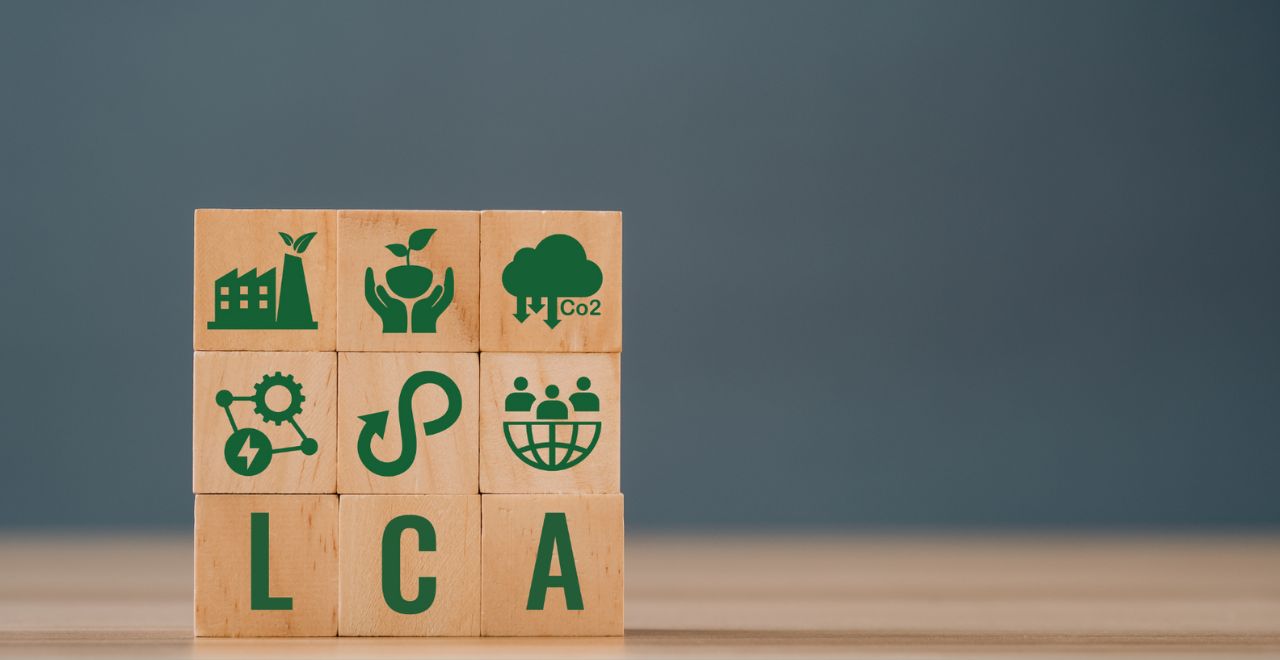What is a Life Cycle Assessment?
A Life Cycle Assessment is a systematic method for the comprehensive evaluation of the environmental impacts of a product, process, or service over its entire existence. The analysis encompasses all stages a product goes through: from raw material extraction, manufacturing, use, transportation, and disposal to material recycling. The LCA method provides a holistic view of environmental impacts and takes into account various factors such as resource consumption, emissions, energy expenditure, and waste.
How is a Life Cycle Assessment Conducted?
1. Goal & Scope
Every Life Cycle Assessment begins with a clear definition of its goal and scope, such as comparing a newly manufactured medical device with a remanufactured one. It specifies which environmental impacts are considered and what functional unit serves as a reference, often quantified in terms of CO2 equivalent emissions (CO2eq) in our analyses.
The LCA also captures the utility and function of the product under investigation, including interactions with other substances. For instance, it examines how pollutants released during the cycle react with other environmental substances and whether the materials used are recyclable.
2. Data, Data, Data
In the second step of the LCA, known as inventory analysis, all relevant data are collected on raw material extraction, manufacturing, transportation, use, and disposal. The result is a comprehensive inventory list that includes input (resource use) and output (emissions and waste) for each phase of the life cycle.
3. Impact Assessment
During the impact assessment, the data collected from the inventory analysis are converted into environmental impacts using scientifically based models and methods. This helps quantify contributions to global warming, water and soil acidification due to increased nutrient enrichment, and other environmental impacts in various categories. Subsequently, consistency, completeness, and sensitivity analyses are conducted to identify weaknesses in the analysis and improve the quality and reliability of the results, especially when LCA results are used for decision-making, environmental assessment, or product improvement.
4. Conclusion
Based on these analyses, conclusions and recommendations are developed, and a report is written. The report analyzes which phases of the life cycle have the greatest environmental impact and where potential hotspots and opportunities for improvement lie. Ultimately, recommendations for more environmentally friendly alternatives or measures are derived.
The Life Cycle of Two Catheters
For a long time, life cycle assessment was primarily a topic explored by the scientific community. However, it is increasingly gaining significance for companies as they aim to better understand and transparently communicate their environmental impacts. This holds true for us at Vanguard AG as well.
Together with a research team from the renowned Fraunhofer Institute for Environmental, Safety, and Energy Technology UMSICHT, we examined medical technology and compared the production of a new electrophysiology catheter (heart catheter) with that of a remanufactured catheter using Medical Remanufacturing. The goal of the analysis was to better understand the emission reduction potential of the remanufacturing process. This involved determining the emissions associated with the original manufacturing process and comparing them with those of the refurbishment process. Additionally, the resource consumption associated with the process was analyzed.
The results of this study are impressive. They reveal that Medical Remanufacturing reduces the CO2eq footprint by over 50 percent and decreases resource consumption by more than 28 percent. This result underscores the importance of researching and implementing alternative and sustainable manufacturing and refurbishment methods to reduce environmental impacts. The study also highlighted that the positive effects increase with the number of refurbishment cycles, emphasizing the significance of a sustainable circular economy and encouraging further action and research in this direction.
Why is Life Cycle Assessment So Important?
Life Cycle Assessments are crucial in research as they provide a holistic view of environmental impacts and serve several important functions. They offer valuable insights to decision-makers in industry, government, and nonprofit organizations, helping them make informed choices. They are particularly relevant for policymakers in supporting the development of regulations and guidelines that promote more sustainable practices. By understanding the entire life cycle of products, companies can identify areas for improvement and operate more sustainably overall. Moreover, Life Cycle Assessments serve as a basis for comparing products or services, contributing to the promotion of more sustainable choices.
In summary, life cycle analyses are an indispensable tool in research and play a significant role in promoting environmentally conscious actions across various sectors. For Vanguard AG, the Life Cycle Assessment is an essential instrument for continuously improving our products and value chain, making them more innovative and sustainable.
Sources:




